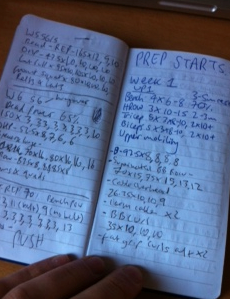This week Horizon presented an experiment, in which they sought to discover which of the two macronutrient’s, fat and sugar, was the ‘bad’ guy causing the health problems seen today. Two identical twins were given two opposing diets, one high fat and the other high sugar, they had to follow these diets for a month. During this time several tests were done, to see what impact the diets were having on their performance in particular tasks. Finally, the twins health markers were assessed at the end of the month and they came to a conclusion on whether it is fat or sugar making us ill.
Here I am going to take a critical view of the study conducted and give my opinion on the outcomes of the programme. I will first outline what took place and then go over what I liked and what I thought could be improved on.

Method
First the twins were tested on a few health markers; body fat %, insulin sensitivity, cholesterol levels, and BMR. Both saw very similar results and were classified as slightly overweight, being 27% and 22% body fat.
The Diet
The twins were advised to eat as much as they wanted from the foods given to them, one high carb (fruit, cereal, starches etc.) and the other high fat (butter, nuts, fatty meats). I will point out that on the high fat diet the twin was not allowed to consume trans fats, these are man-made fats and we want to avoid them where possible.
Cognitive Function Test
After the twins had been following their diets for a few weeks they were given the task of becoming stock traders. For this task they were given a sum of money and could use it to trade stocks and try and make a profit, the winner was the one who made the most money at the end.
The Outcome: The twin on the high sugar diet generated much more profit and performed better during the task.

This happens because when on a high fat diet you are without readily available glucose so the brain switches to use ketones (derived from fat) for fuel. This occurs so that the body breaks down less protein for glucose, by reducing the body’s total glucose requirements. And this is why carbohydrates are protein sparing, as we can derive glucose from them. This is known as ketosis, and some people do not perform well on ketones, they feel tired and become unable to concentrate. However, some people perform fine off ketones, once adapted, so in this case we can either assume the twin was not adapted or he was part of the crowd who perform poorly on ketones.
Satiety Test
Here the twins were given a breakfast of equal calories, one high sugar and one high fat of course. Then after this they were presented with a buffet of foods, and were instructed to eat as much as they liked of their prescribed dietary foods.
The Outcome: The twin eating high fat ate 825kcals, the twin on high sugar ate 1250kcals.

Protein has a significant short term satiating effect, this was seen here and has been seen in many studies; resulting in reduced self-reported hunger, increased self reported satiety and reduced energy intake in the next meal. The twin of course was meant to be eating high fat and not high protein, but as stated in the programme, the two often go together. Studies investigating the satiating impact of carbs and fat on their own show in-significant differences between the two, protein wins hands down for keeping you full. On a side note when looking at alcohol vs. other macronutrients satiating impact, it has been found that due to alcohols derived energy being hard to regulate by the body, we tend not to compensate for the calories ingested from alcohol, making it particularly easy for us to consume too many calories. Even more interesting is the fact that liquid carbohydrate forms, such as fruit juice or energy drinks have the same non-compensatory effect as alcohol. So because the twin on the high fat diet was also consuming higher protein than the high sugar diet he consumed less calories in his next meal. It was not the satiating impact of fat, it was the protein keeping him fuller.
Cardiovascular Test
The twins were put on bikes before breakfast and cycled for an hour, after which one was given an energy gel and the other given a stick of butter, roughly equal in caloric value. They then raced to the top of a hill, the winner being the one who got their first.
The Outcome: The twin on the high sugar diet reached the summit first.

Throughout the day we are mainly using our aerobic energy system, and this is powered mainly by fat. However, when performing high intensity exercise, such as in a race, we push ourselves past our aerobic energy system and move into our anaerobic and creatine phosphate energy systems. When we perform anaerobically we require glucose, when we have a diet high in carbs it is ready and waiting, however when we do not we have to get it from other places. Protein undergoes a process called gluconeogensis, this is where protein is broken down into glucose, this is inefficient and not preferential by any means.
Steve Phinney (ketogenic diet researcher) said ‘therapeutic use of ketogenic diets should not require constraint of most forms of physical labour or recreational activity, with one caveat that anaerobic performance is limited by the low muscle glycogen levels induced by the ketogenic diet, and this would strongly discourage its use under most conditions of competitive athletes’.
This explains why the twin receiving the high carb energy gel performed better on this task.
Body Composition Changes
Both twins lost weight, with half or more coming from their own muscle tissue. The twin on a high sugar diet saw an increase in insulin sensitivity and his cholesterol remained as per before the diet. The twin on the high fat diet also saw no change in cholesterol but saw a marked decrease in insulin sensitivity.

The Conclusion: They concluded that faddish diets prioritizing one food over the other is not the way to go.
My Thoughts
Likes:
- They used human twins as the test subjects.
- They tested the diets impact on brain function, cardiovascular ability and common health markers.
- They proved to be open minded, non-biased and skeptical. Key to being an evidence based practitioner.
- They concluded that we should avoid faddish diets and it is never one thing but the sum of things. Best is to avoid processed foods and eat a whole food based diet.
Dislikes:
- Diets were not calorie controlled.
- Protein was not controlled and hardly discussed.
- In general there was a lack of controls in all experiments e.g. they did not test the twins performance on their regular diets, for example one twin may have been fitter prior to the study.
- Both twins were overweight, which means the results cannot be directly applied to healthy populations.
- Small sample size.
- At no point were hormones discussed or studied, fat is essential for healthy hormone function and therefore I believe it should have been measured as a health marker. Also ghrelin and leptin were discussed but were never measured.
- They did not mention the fact that by excluding a whole macronutrient it was almost inevitable that the twins would be in a calorie deficit and lose weight.
- The diets were very unrealistic and unsustainable.
To me the study puts a clear case against high fat diets and really promotes carbohydrates. The twin on high carbs outperformed the other twin on both the cognitive and the cardiovascular task. Furthermore, his insulin sensitivity increase compared to the high fat dieting twin who’s sensitivity dropped, close to diabetic levels. Furthermore, the high carb twin lost only 1kg of muscle vs. the high fat twin’s 2kg. It looks like those who choose to eat a ketosis/high fat low carb type diet for extended periods of time would be at risk of diabetes and muscle loss. The study was very interesting, however it was uncontrolled and ignored some important areas, therefore it would be irresponsible to draw any conclusions from it.
Fat and carbohydrates are both important, they both serve their own purposes, to get rid of either would be a mistake. The amount we need is highly individual, if you want to know more about this please see my previous post Need to Know Nutrition- Practical Application. People today are becoming overweight because we have access to delicious food 24/7 and we do not have to work hard to get it. Studies show we burn less energy then we used to, and we also consume more calories.
As they said in closing on Horizon, ‘it’s up to you’, move a bit more and be conscious of what you are eating.
Resources
Alan Aragon ‘AACUK Conference’ 2013.
Beasley, J, M. et al. ‘Associations between macronutient intake and self reported appetite and hormone levels…’ American Journal of Epidemiology. 2009.
Horizon ‘Sugar v Fat’ 2014.
Lyle McDonald ‘The Ketogenic Diet’
Poppit, S, D. et al ‘Short Term Effects of Macronutrient Preloads on Appetite and Energy in Lean Women’ Psychology and behavior, 279-286pp. 1998.























